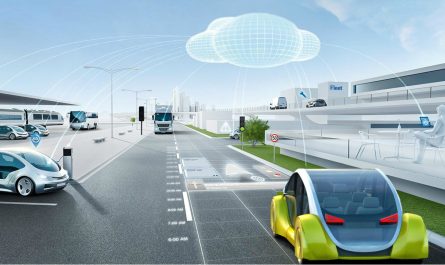The Growing Role of Automation
Industrial robots have been steadily increasing their role in manufacturing industries over the past few decades. As technology advances, robots are becoming more affordable and versatile, allowing them to take on tasks that were previously only feasible for human workers. This has led to significant growth in the use of industrial robots across various sectors.
Robots are now commonly used for tasks like welding, assembly, packaging and material handling. Their strength and precision make them well-suited for repetitive, dangerous or ergonomically stressful jobs. For industries, robots offer benefits like reduced costs through higher productivity and less wasted material. They can also work continuously without breaks, and their accuracy remains consistent day after day. This helps boost overall efficiencies and quality control.
A survey by the International Federation of Robotics found that from 2010 to 2015, worldwide annual robot sales grew by 12%, with an average of over 250,000 new robot installations each year. Leading countries for robotics adoption include China, Japan, the United States and various European nations. Sectors seeing the highest volume of robot installations currently include automotive manufacturing, electronics/electrical products, and metal/machinery industries.
Robot Installations in Key Industries
Automotive Manufacturing
Robotic assembly lines have been vital to automotive manufacturing success for decades now. Robots excel at high-volume welding and assembly tasks, helping automakers lower production costs while maintaining strict quality requirements. Companies like Toyota were early pioneers in automating their facilities, giving them a competitive advantage.
Today, almost every major automaker relies heavily on robotics. The automotive industry accounted for over 40% of total robot installations worldwide from 2010-2015. As self-driving cars and other advanced vehicle technologies emerge, robotics will continue reshaping automotive production methods.
Electronics/Electrical Products
Precision assembly is key in electronics manufacturing, making robots a natural fit. They can handle tiny components with unmatched consistency and care. Robotics use is extensive in building circuit boards, assembling small devices and automated testing.
The sector relies on robotics for quality, speed and reduced costs. Significant players like Samsung, Foxconn and Intel all leverage robotics heavily in their global manufacturing networks. This industry represented over 25% of worldwide robot installations from 2010-2015. Growing consumer electronics demand ensures strong future growth for industrial robotics in electronics.
Metal/Machinery Industries
Manufacturing heavy machinery, tools, engines and other metal products requires robots that can handle large workpieces, heat, weld seams and more. These versatile industrial robots give manufacturers competitive advantages in productivity and quality compared to manual labor.
Metal fabrication, metalworking machine tools, engines/turbines and other machinery subsectors have increasingly adopted robotics in recent decades. Robots now perform tasks like casting, forging, machining, assembly and quality testing in metal industry facilities globally. This diverse sector accounted for over 10% of total industrial robot installations from 2010-2015.
The Use of Collaborative Robots
While industrial robots have traditionally operated behind fences for safety, collaborative robots (“cobots”) have emerged to work directly alongside human workers. Cobots have integrated safety technologies, controls and vision systems that allow them to safely interact with humans in a shared workspace.
Their flexibility makes them suitable for tasks requiring dexterity and judgments that are difficult for traditional robots. Common collaborative applications include selecting parts, machine tending, quality inspection, packaging and small-item assembly. As industries grapple with rising labor costs and worker shortages, cobots offer a way to augment the workforce without major redesigns or safety barriers.
Leading companies like Universal Robots, FANUC, KUKA and ABB have seen strong sales growth for their collaborative robot product lines in recent years. Industries testing collaborative applications span automotive, electronics, food processing and more. As cobots become more affordable, analysts expect their adoption to increase significantly and blur the lines between robotics and human-centered automation. They represent a promising avenue for expanding robotics use cases beyond traditional industrial settings.
The Future of Robotics Automation
All signs point to continued growth and new innovations in industrial robotics moving forward. Technology advances will make robots even smarter, safer, versatile and cost-effective for more manufacturing processes. Analytics, AI, machine vision and advanced sensors will give robots new capabilities for predictive maintenance, quality control and flexible manufacturing.
Collaborative robots also promise to open up new territory as they become faster, more dexterous and affordable for small businesses. Meanwhile, robots continue disrupting traditional manual labor roles across various Industry 4.0 applications. Automation is also inspiring new advanced manufacturing approaches like additive manufacturing (3D printing).
Keeping pace with these developments will require cultivating robotics skills and engineering talent globally. Educational institutions are increasingly partnering with industries to inspire students’ interest in robotics-related careers like mechatronics, programming and maintenance. Such initiatives aim to ensure an adequate future workforce for advanced manufacturing as robots become integral partners, not replacements, for human workers in innovative production environments. Overall, industrial robotics innovations remain a driving force reshaping worldwide manufacturing competitiveness.
*Note:
- Source: Coherent Market Insights, Public sources, Desk research
- We have leveraged AI tools to mine information and compile it



